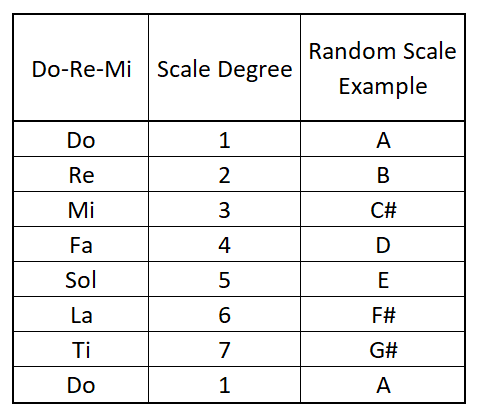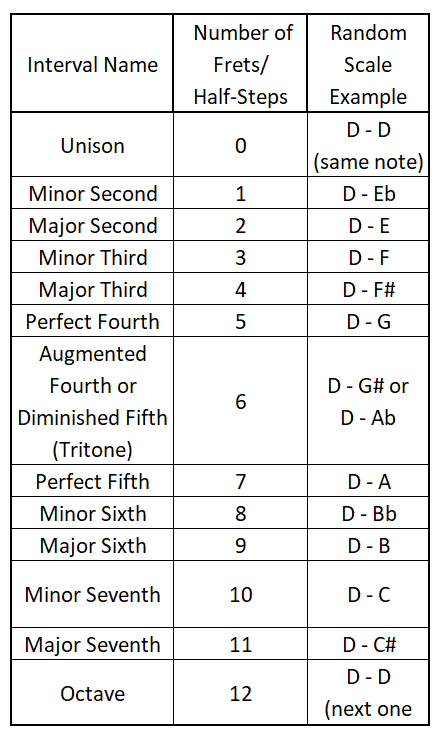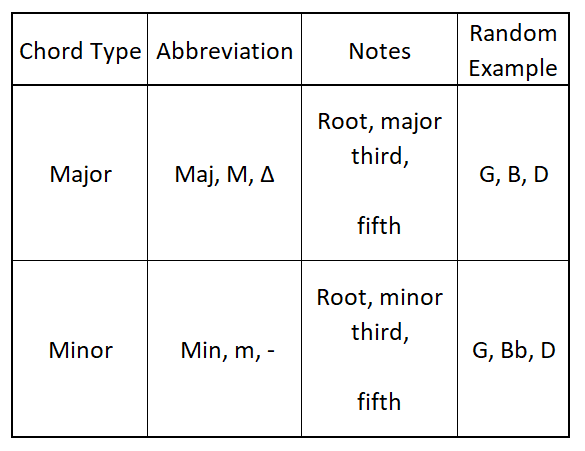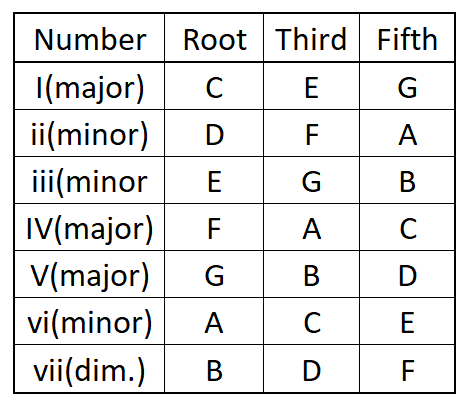Music theory for beginners doesn’t have to be scary. Learning music theory improves your knowledge as a guitarist and makes EVERYTHING easier. In this lesson we’re going to show you everything you need to know about music theory.
Over 100,000 guitar-learners get our world-class guitar tips & tutorials sent straight to their inbox: Click here to join them
In this free lesson you will learn:
- How to learn music theory for beginners in 10 easy steps.
- 3 easy tricks that will turbo-charge your scales, chords and intervals.
- The no1 secret that will make EVERYTHING easier for you as a guitarist.
You already know more music theory than you think…
This is the good news about music theory. Everything about music theory for beginners, even the numbers behind chords and the way we have to count to four, is about clearly communicating the function or job of every aspect of a song, and it should make sense once you understand these eight fun facts about music.
Music Theory For Beginners – The Notes
You know that in any song, some notes are higher and some are lower. That idea is called pitch.
If you want to learn music theory for beginners, you must learn about pitch.Let’s break it down.
- Pitch is measured out on the guitar by the frets. Each fret on the guitar represents an interval of pitch called a half step.
- The pitch names of notes use a musical alphabet that goes A, B, C, D, E, F, G.
- To go up one letter of the musical alphabet, you go up two frets, or a whole step, with two exceptions: To go from B to C, or from E to F, you only go up a half step, or one fret.
- These two exceptions are called natural half steps, and to remember where they are, remember this: Big Cats Eat Fish.
What about the notes in between the musical alphabet?
So if F plus a whole step is G, what should you call F plus a half step? Ah, this is where sharps and flats come in.
Each of those in-between-letters notes have two names, a sharp (#) name and a flat (b) name. Let’s break it down:
- Sharp means “up one half step,” so that note in between F and G can be called F#, or F sharp.
- Flat means “down one half step,” so that same note can also be called Gb.
Woah! That’s confusing, which one should I use?
When learning music theory for beginners, it’s important to understand that guitars tend to play in sharps, as do all stringed instruments.
- So, because of this you can just call all of those in-between notes sharps.
- Put all of those notes together, and you’ve got yourself a chromatic scale!
Now, the chromatic scale is just the name given to all the notes used in western music, showing you how the notes are organized by pitch. It looks like this, going clockwise:
The lines going between the notes show where the fifths are. If C is first, G is fifth, and the fifth is an important relationship between notes, as you’ll see later.
Fun Theory Fact!
The two names of the notes that have two names, in case you like to know all the names of all the things, are called enharmonic equivalents.
Learn 12 EASY beginner chords with our popular guide

✅ Stop struggling. Start making music.
✅ Learn beginner-friendly versions of every chord.
This is our most popular guide and it will improve your chord ability quickly! 😎
Get your own personalised guitar-learning plan 🎸
Get a custom guitar-learning plan here: Click here for GuitarMetrics™
World-Class Guitar Courses 🌎
Learn from the world's best guitar educators: Click here for our guitar courses
Music Theory For Beginners – The Major Scale
If Western music has a structure, that structure is the major scale. There is a pattern of whole steps (W) and half steps (H) that goes like this:
- Whole.
- Whole.
- Half.
- Whole.
- hole.
- Whole.
- Half.
You can also think of it like this: W W H – W – W W H.
You can play a major scale on your guitar right now. Just start on any open string, and then go up this sequence of frets: 2 2 1 – 2 – 2 2 1. It should sound like “Do-re-mi.”
Here is a chart of all of the notes in all of the major scales. Learning these is a sign that you have absolutely mastered music theory for beginners.
Don’t worry about memorizing the notes in all of the scales. Memorize the formula and then try to construct major scales, remember these music theory for beginners cardinal rules of acale construction:
- Major scales have either sharps or flats, but not both.
- A major scale runs sequentially through the musical alphabet, so you may not repeat a letter or skip a letter. Each letter happens once until you get through the scale.
Pro-tip: Start playing major scales on your guitar right away, going up (up in pitch, which means headed toward the sound hole) one string. Do this in the first five keys – C, G, D, A, and E. Those are the five guitar-friendly keys that you will be dealing with for most of your musical career!
Music Theory for Beginners: A Quick Music Reading Primer
You do not need to know how to read music to understand how music works, and music theory for beginners is about much more than taking information from a page and putting it through your guitar.
But it helps to understand the written language of music, because sometimes that is the format in which it is presented.
The simplest written form of music for the guitarist is a chord chart, like this:
F C7 F
Hey, Jude, don’t make it bad, take a sad song and make it better
Then there’s a lead sheet, like this:
If you’re just playing chords, there’s no need to worry about the standard notation at all, assuming you know how to sing the song.
When learning music theory for beginners, it can be difficult to understand music notation. However, here are some tips and tricks which should help you:
- That lovely swirl in front is a treble clef, and the little 8 underneath means that you’ll play the notes an octave below where they are written.
- Each line and space on the staff is a letter of the musical alphabet, and the higher on the staff you go, the higher the pitch is. The lines go E-G-B-D-F, and the spaces go F-A-C-E.
- That pointy B on the B line is a flat sign. It means whenever you run into a B in this song, you have to play a B flat instead. It’s a key signature; more on those later.
- The appearance of the notes tells you how long you are supposed to play them, and the squiggles and boxes are rests, telling you how long not to play. More later on reading rhythmic notation.
- This standard notation tells you which pitch to produce, but it does not tell you where on the guitar that pitch is located, and on the guitar, pitches are located in multiple places.
So what most guitarists actually use is tablature, a guitar-friendly form of notation. That little snippet of “Hey Jude” looks like this in tablature:
The dotted lines represent the strings of the guitar, and the numbers represent the frets. Tablature tells you exactly where to put your fingers, but it does not tell you which fingers to use or how long you should be playing each note.
Music Theory For Beginners: Are Keys and Scales The Same Thing?
If there were a music theory for beginners FAQ, this would be at the top of the list. The ideas of key and scale are so intertwined that it’s hard to think of them separately.
- To understand the difference, it’s helpful to think of the key of the song as the home base of the song. Every song needs a place to land, and that landing place, that note and that chord, is the keynote.
- “Twinkle Twinkle Little Star” happens to begin and end on the keynote; try to sing or play it on any other note, and you’ll hear that the song does not land correctly. That’s what we’re talking about.
- When you determine the key of a song, the keynote or tonic is the starting point of the major scale you are using, and it is also the root of the I chord of that song.
The major scale is the universe of notes that make up at least 75 percent of the melody of the song, and also as you’ll see later, the majority of the chords or harmony of the song.
The Organisation of Keys
As a guitarist, you’ll spend 90 percent of your time playing in the keys of C, G, D, A, and E – the first five keys in the scale chart above.
Although we can’t see sharps and flats on the guitar like we can on a piano (they’re the black keys), it’s helpful to know that there is an order to things.
This circle of fifths shows you all of the keys, among other things, in increasing order of sharps and flats.
Music Theory For Beginners: Intervals
There are two ways of looking at intervals, and they are both useful.
The most immediately useful way is the idea of scale degree, which is just assigning numbers to the notes in a major scale according to their position.
Looking at all the intervals gives us a more thorough picture and can help us figure out all the intervals in a tune (melodic, one note at a time) or in a chord or other harmony (harmonic, more than one note at a time).
- Here is a handy music theory for beginners chart:So, from this chart, you can see that D is the fourth, or four, in A.
- It’s just a numerical way of stating the relationship between D and A. This is useful in figuring out the scale degree a melody starts on and in figuring out the chords in a song.
When we are talking only about the notes in a given scale, we are talking about diatonic intervals or harmony.
Pro-tip: Learning how to play intervals up and across strings helps you to find things on the guitar more easily. Even if you think you aren’t ready to use them, grab a fretboard chart and start doing them today!
Download our lead guitar cheat-sheet to make things easier
It's hard to understand which scales work with which keys.
So we created a cheat-sheet! A key and scale-finder that you can use again and again.

Get your personalised guitar-learning plan 🎸
Get a custom guitar-learning plan here: Click here for GuitarMetrics™
World-Class Guitar Courses 🌎
Learn from the world's best guitar educators: Click here for our guitar courses
Music Theory For Beginners – Basic Chords
Major and minor chords have three notes: a root, the note the chord is named after; a third, telling you whether the chord is major or minor; and a fifth, a stabilizer note that gives your ear some context for the other two notes.
Use the interval chart to find thirds and fifths, and this formula to find major and minor chords.
These basic chords are called triads because they have three notes. Grab your fretboard chart and try to play different triads one note at a time.
Music Theory for Beginners: The Intersection of Scales and Chords
Now that we know how to build chords, let’s see how they work in the context of songs.
Because the key of a song determines the scale that the song uses for its melody, the key also determines the chords used for harmony.
Diatonic harmony, a set of chords built using only the scale of the key you are in, makes up the structure of a song. Here is how it works.
All of the above chords use only the notes in the C major scale, and the way the chords shake out is represented in the top row.
- All you need to know about harmony is in the top row, because it works the same way no matter what key you are in!
- Most chord progressions for folk, rock, blues, pop, and jazz songs involve some version of I, IV, and V chords.
Learning those three chords in the guitar-friendly keys is your music theory for beginners trick that will help you figure out how most of your favorite guitar songs work.
Music Theory For Beginners: Rhythm and Notation
When learning music theory for beginners it’s important that we talk about rhythm. Rhythm is the maintenance of a steady beat.
For guitarists, this is done with the repeated downward strum. That’s called a quarter note strum, and it is the basic unit of strumming.
A quarter note is the basic unit of musical counting; it gets one beat or count. Here is a chart of basic notes and rests showing you how long to make a sound last or how long not to make a sound.
If you are interested in developing skills in reading and understanding rhythmic notation, you can check out this free music theory for beginners website: Rhythm Dictation
What do I do with all this information?
The above concepts in music theory for beginners have greater meaning and usefulness in your life when you start to play around with them on the guitar. Here is a short list of things you can do:
- Name all the notes going up the neck on one string
- Play a major scale up one string starting on the open string, then on the third fret
- Pick a note on one string and find an interval from that note on the next string
- Strum a quarter note strum over a count of four, then an eighth note strum (down up) over a count of four, switching back and forth with a steady beat.
Recommended resources
Guitar Theory: The 4 Step System For Rapid Progress
Notes On A Guitar: Unlocking The Fretboard
What’s The Difference Between Sharps and Flats? Which should I use?
Chords In The Key Of EGuitar Keys: An Essential Guide
What Type of Guitarist Are You?
Take our 60-second quiz & get your results: Take The Quiz
Join the world's best online guitar school 🌎
- Get your own personalised guitar learning plan (customised just for YOU).
- World-class online guitar courses. Learn at your own pace.
- Community Campus & Learning Forum - A friendly community! Connect with our team & students. 😊
- Beginner Song library with chordsheets, tabs and tips. (Songs suitable for all levels!)
- Regular live streams, seminars and Q&A sessions - Learn from world-class guitar educators. Get all your questions answered!
Click here to learn more about National Guitar Academy membership 
Cool Guitar T-shirts 😎
Look cooler! Check out our merch: Click here to see our merch store
Want free guitar tips and video lessons delivered to your inbox?
Join over 100,000 guitar-learners and subscribe to our guitar-tips-by-email service. (It's free.)
We'll send you a series of lessons that will move you to the next level of your guitar journey.
Learn how everything fits together quickly, easily and effectively. We share ninja tips (for instant fun!) but also timeless fundamentals that will deepen your understanding.

Popular Lessons
How To Learn Guitar: An 11-Step Programme For Beginners
How To Choose The Perfect Beginner Guitar
More Cool Guitar Stuff
Learn about National Guitar Academy: About Us
Join us on Facebook for daily guitar tips.
Listen to our Learn Guitar Podcast for rapid guitar progress.
Check out our free chord lessons.
Get our best guitar tips & videos
Where should we send it?
Where should we send it?
Get our best guitar tips & videos














